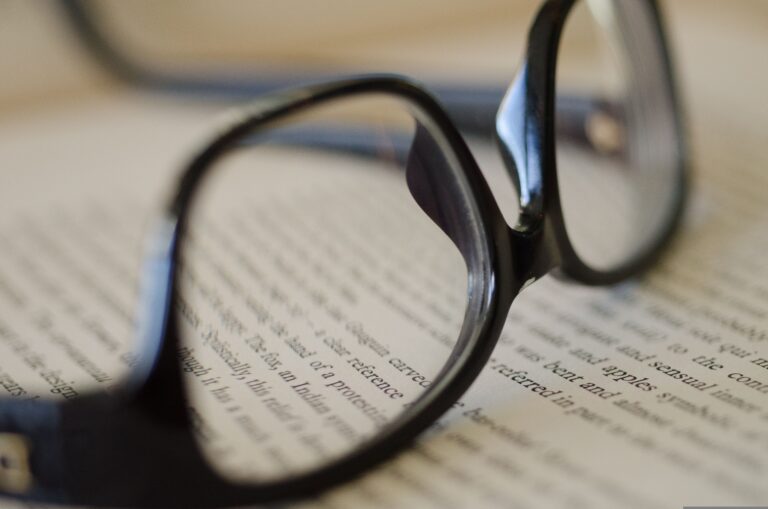Getting through lingo-heavy academic papers and learning the key message can be difficult if you aren’t used to it. If you stick with a science-related field, you will have to do a LOT of this, yet this very important skill is often not formally taught. I was very fortunate to have gotten some advice and practice in this during my studies at Colorado State University (shout out especially to my professors Dr. Justin Reeves, Dr. Ed Hall, Dr. Kelly Wrighton, and Dr. Daniela Cusack!), so I am sharing what I’ve learned in hope that it will help more students out there just getting started!
First: Reading order is based on your end goal
You’ve probably been reading mostly from the beginning to the end ever since you learned to read. I had, and still do if I’m reading a novel or a biography. Reading research papers is different though – it often helps not to read a paper through from start to finish, but instead to jump straight to the information you need from the paper first. Goal-oriented reading goes something like this:
Goal 1: You want to learn the basics of what is most important in a new/unfamiliar field:
- Focus on the Introduction and Conclusion sections, which tend to describe motivations and implications for research in that field.
- Circle back to the Results and other sections of the paper as needed to help you understand the conclusions.
Goal 2: You are trying to gather information about a specific topic in a field and are reading papers sent to you or found in a keyword search:
- Read the Abstract and highlight the methods and findings in it.
- Look at the figures and tables in the paper and read the captions. Spend a bit of time to understand what the figures and tables are showing. This is often how you can gain the most understanding about the study.
- Skip to the Methods section and skim, highlight anything relevant to your question(s).
- Do the same for the Results section.
Goal 3: You are leading a group discussion about the paper:
- Similar to gathering info, begin with the Abstract, then the figures and tables.
- Skip ahead to the Discussion section to find out what the authors thought about how their findings fit with previous research and future directions. This can help you formulate questions to discuss with your group.
- Now skim the Methods and Results sections with a critical eye for things that seem unique, and make sure to note what the authors say about their approach.
Goal 4: You are planning an experiment:
- Skim the Abstract to be sure that the paper you’re reading is relevant to what you need to know.
- Skip to the Methods section and highlight the methods relevant to your experiment.
- Skim the Discussion for any comments related to the methods used and how they may have impacted the study.
Woo, you’ve read and highlighted, now what? Next steps for understanding
Here is a suggested framework for building on your knowledge from the paper you’re reading:
- Pick out and note what is the “big picture” of this study – what is its relevance or what are the broad implications?
- Note the ”key characters” of the study – what are the major variables?
- Articulate in your own words what the authors’ goals were – what hypothesis or knowledge gap were they trying to tackle?
- Note the major findings of the study. How do they match up with your or the authors’ expectations?
- Come up with 1-3 strengths and 1-3 weaknesses of the study. What was done really well, and what could have been done better?
- Highlight unanswered questions the authors mention in their discussion, and see if you can come up with 1-3 more research questions based on what you read.
- Write a short (2-3 sentence) summary of what the authors did and found, and (optionally but usefully) how that relates to your interests or purpose. This is called an annotation. Example:
- “The authors demonstrated the effect that the storage of kimchi has on its microbial populations as the environment becomes more acidic from the growth of lactic acid bacteria. The inhibition of different yeasts was found to be essential for a prolonged shelf life. This is relevant to our study of kimchi microbiomes, because it shows how the microbiome changes with lactic acid fermentation over time.”
Doing a literature review? Some extra tips
- Start with the questions you want to address in your review. If you’re not sure yet, follow the above while reading some exploratory papers to identify knowledge gaps in your field.
- Use a citation manager. These can save you SO much time by creating a bibliography/reference list for you in your papers, and also by giving you a way to keep track of papers you read.
- Use a discovery (web-based) app that use AI to power the search to help you discover more relevant papers.
- Try using a database to keep track of your papers and notes.
- Set up an outline for your paper with structured subsections before you get lost into forever reading land. The outline can and should be updated as you go but it’s good to start with a clear direction.
